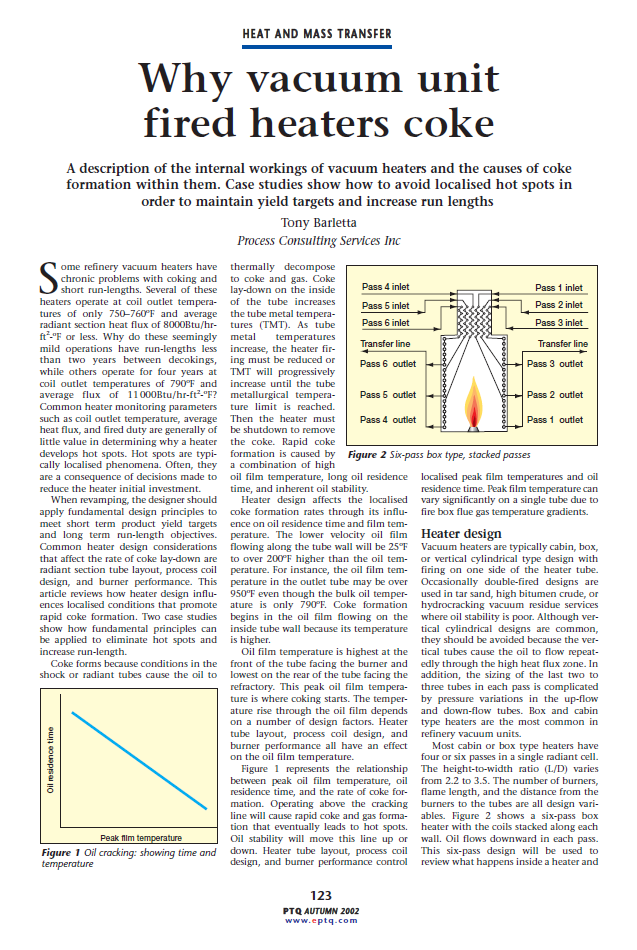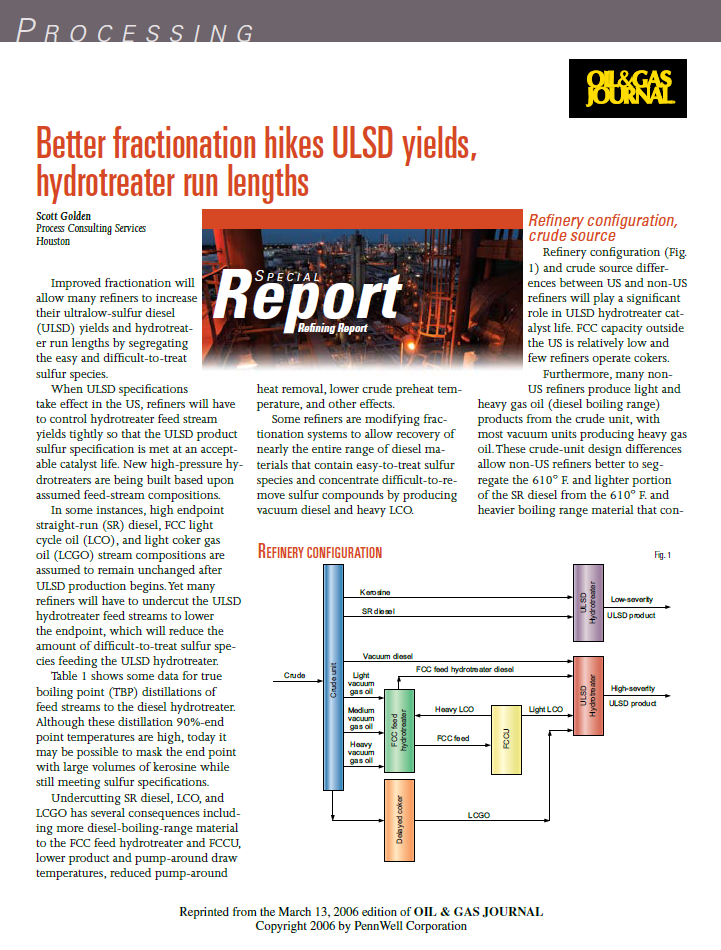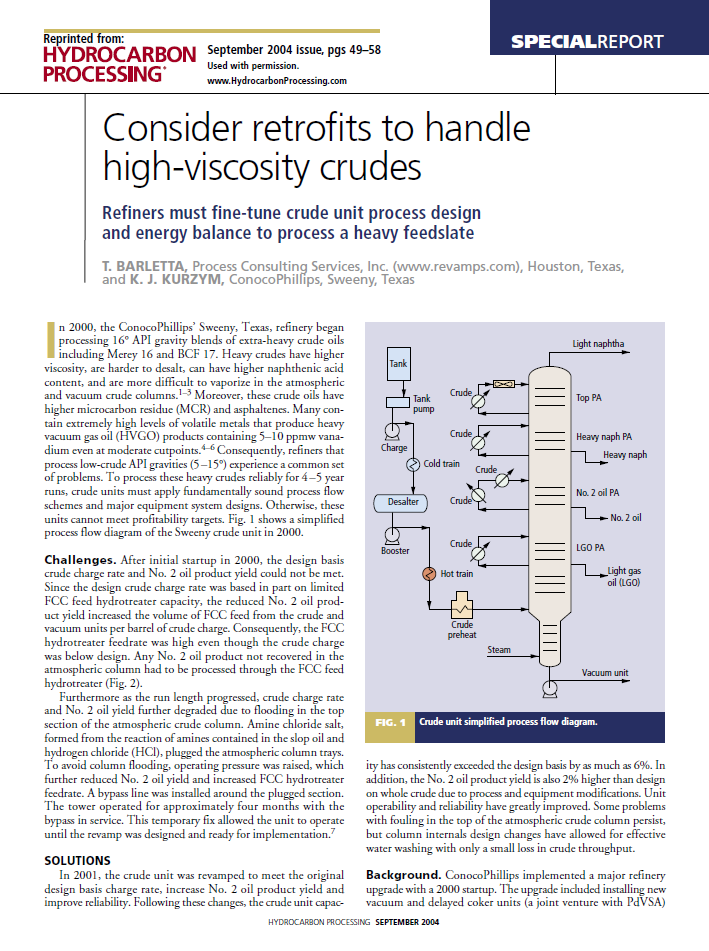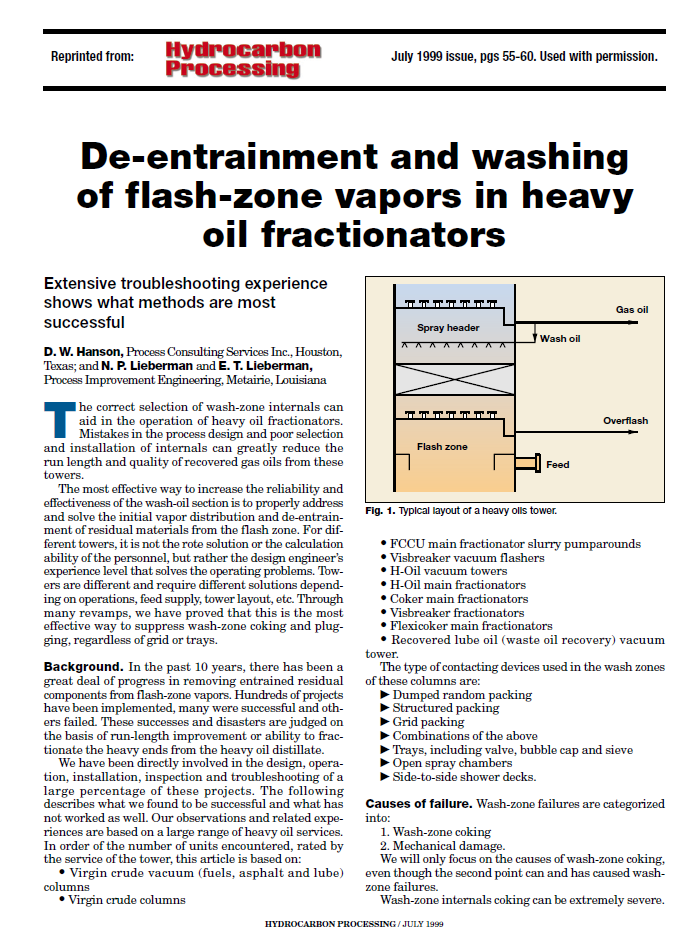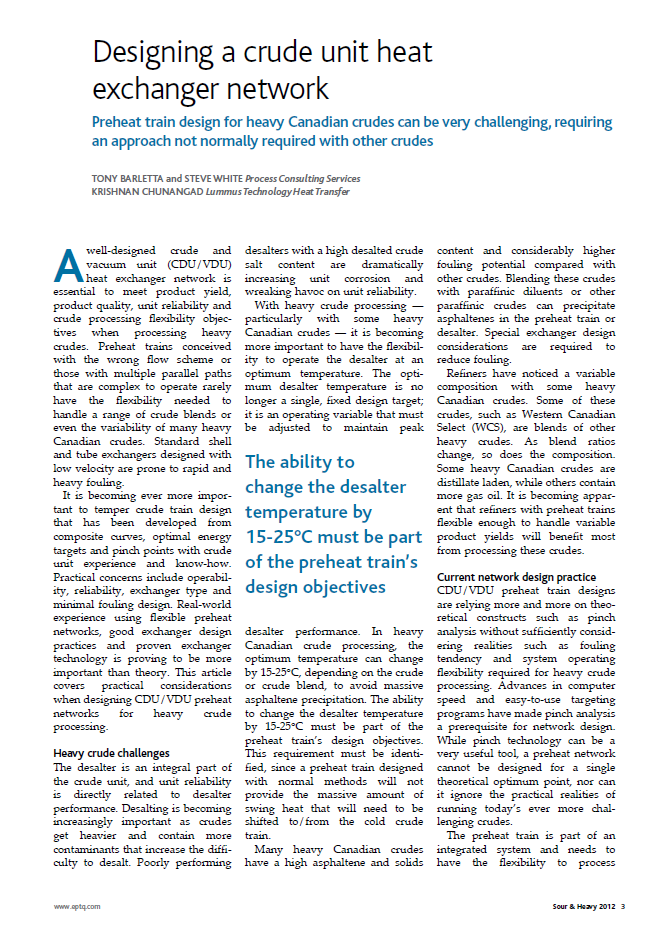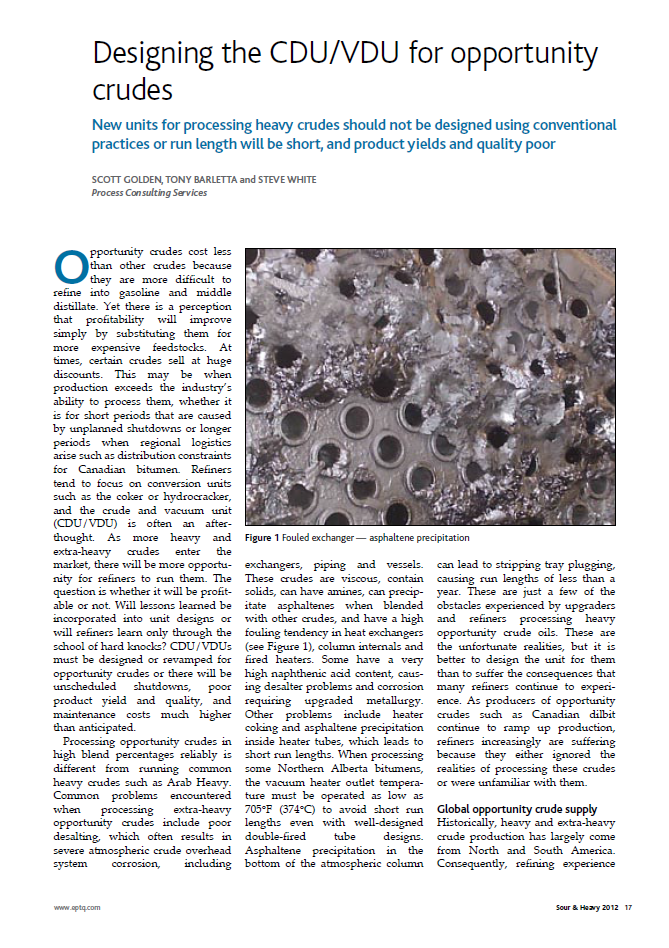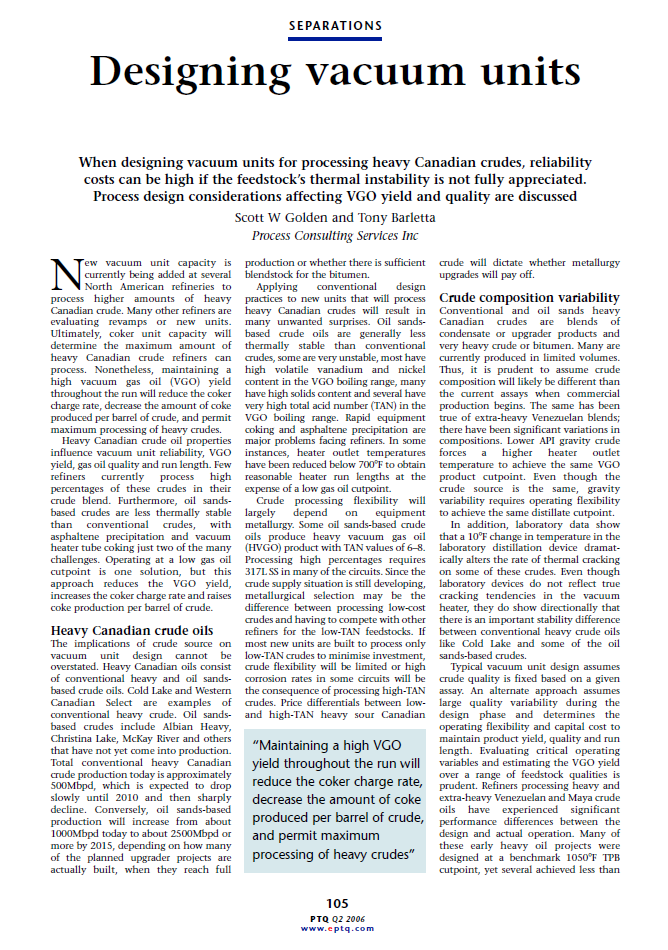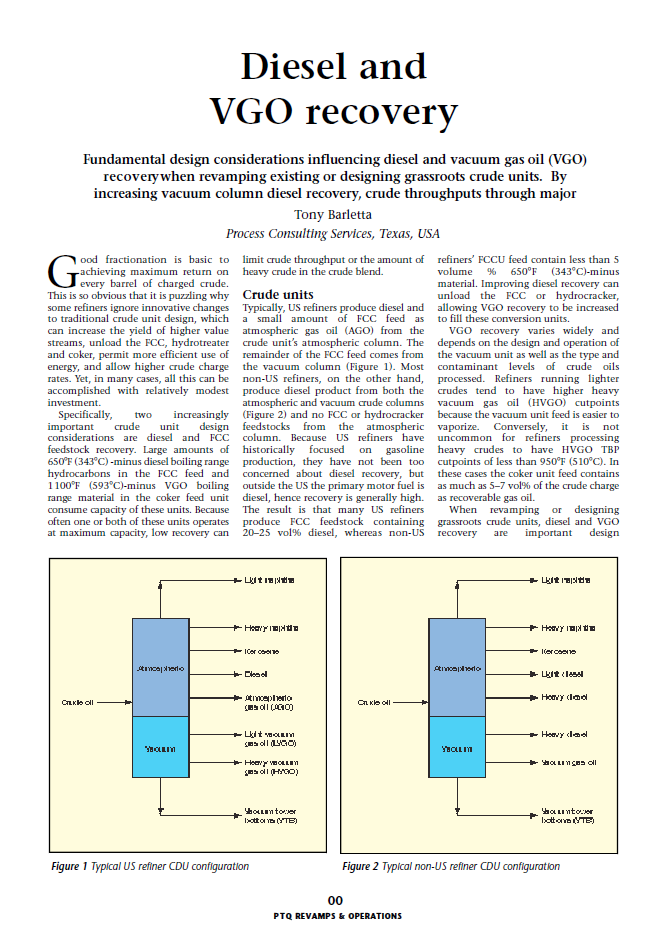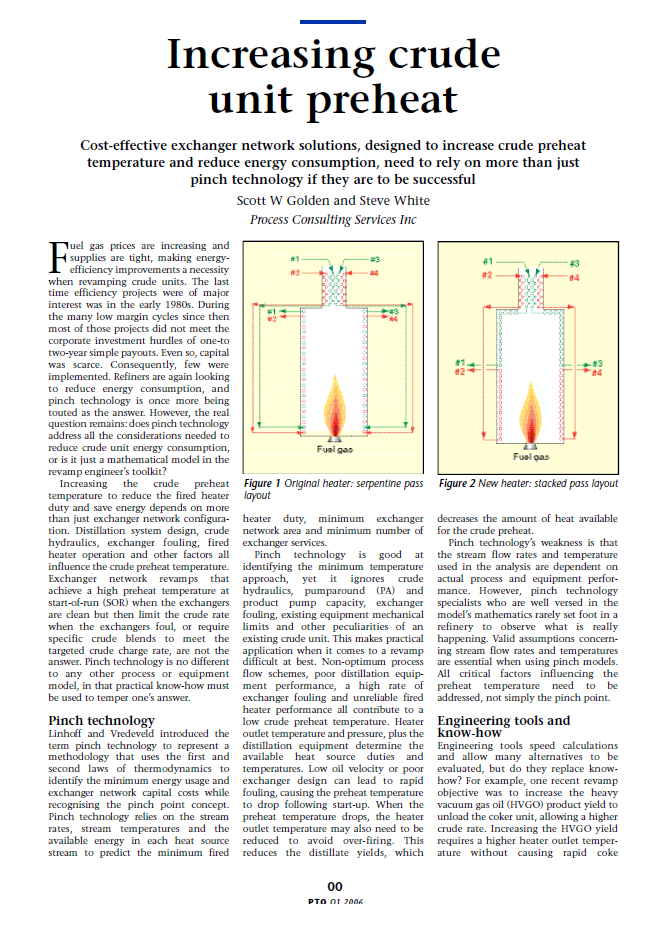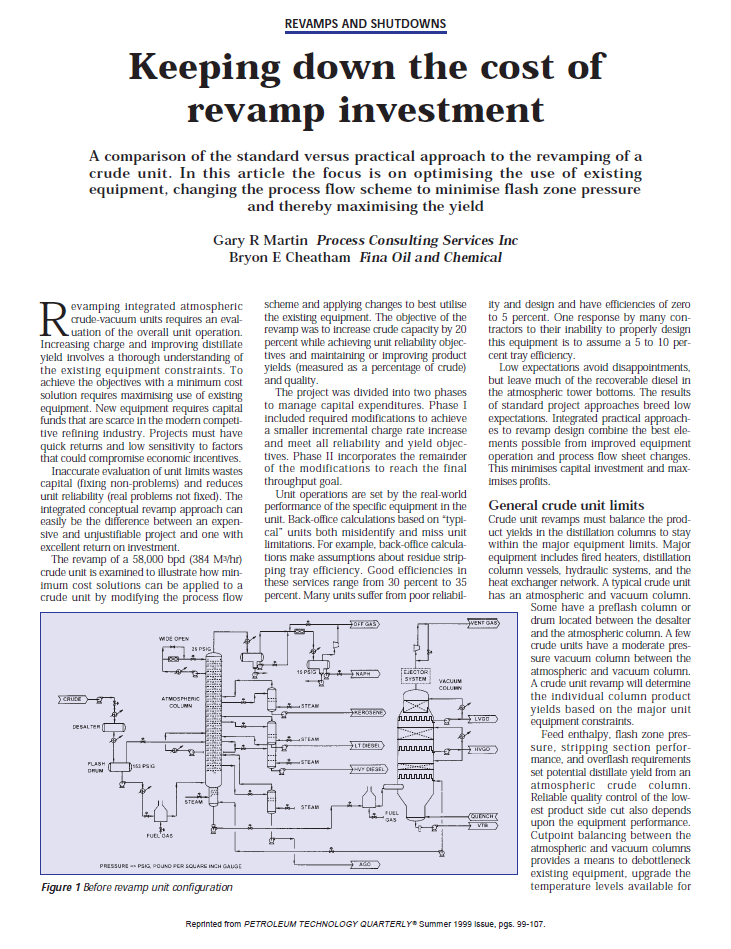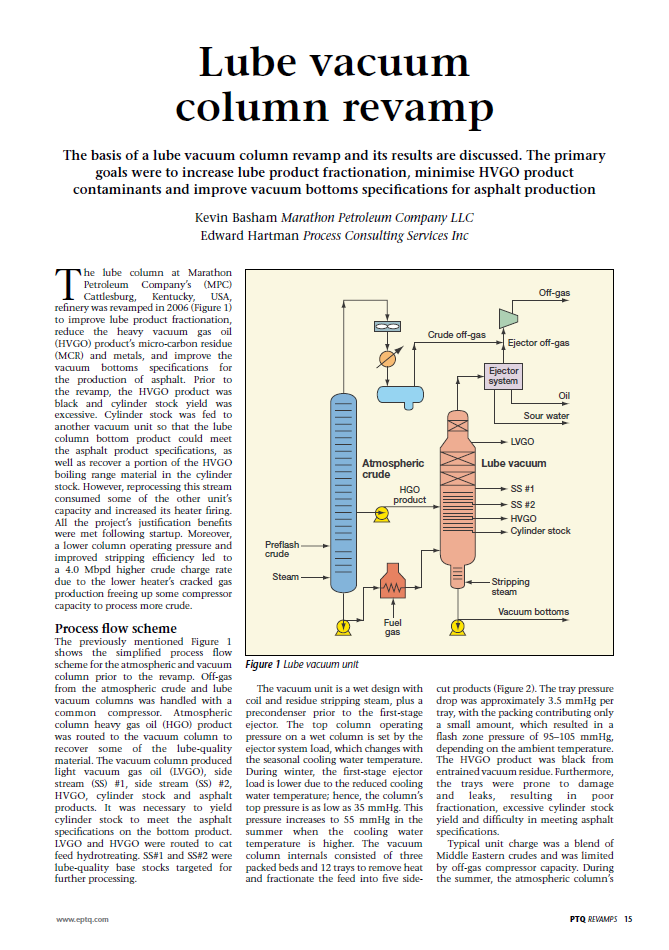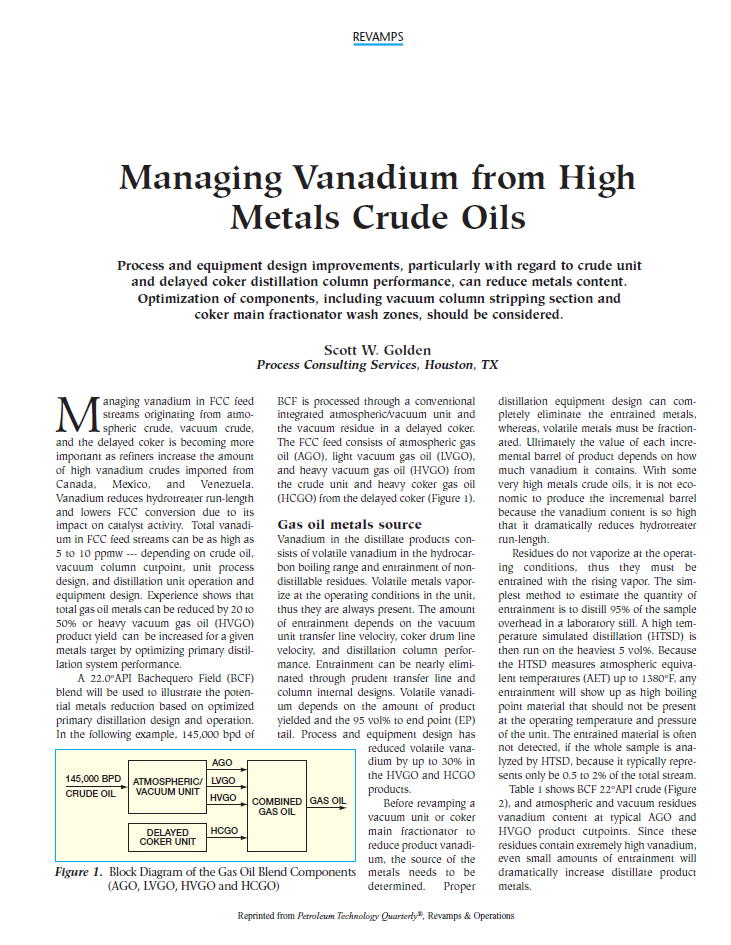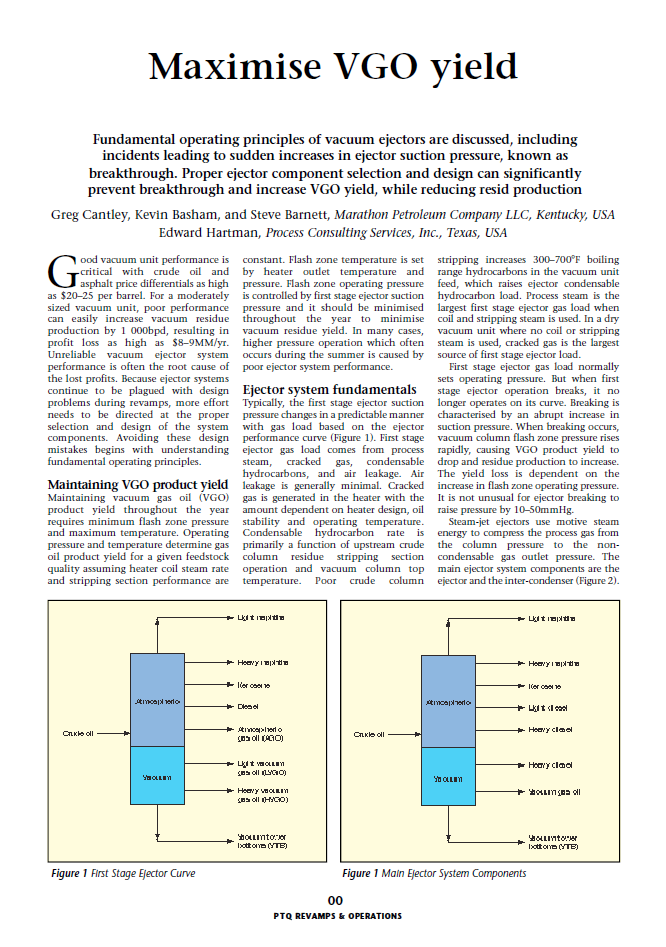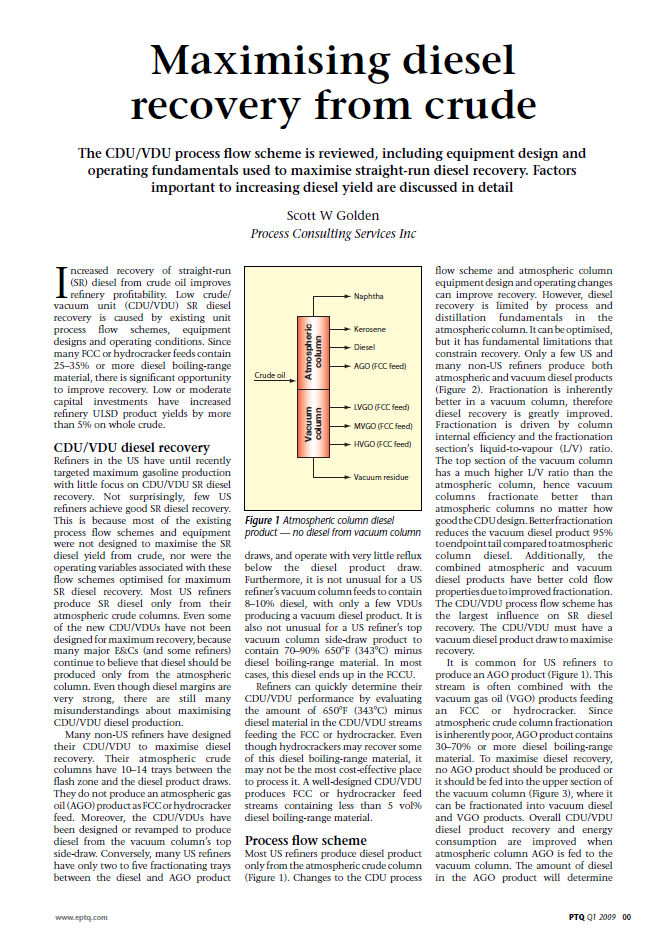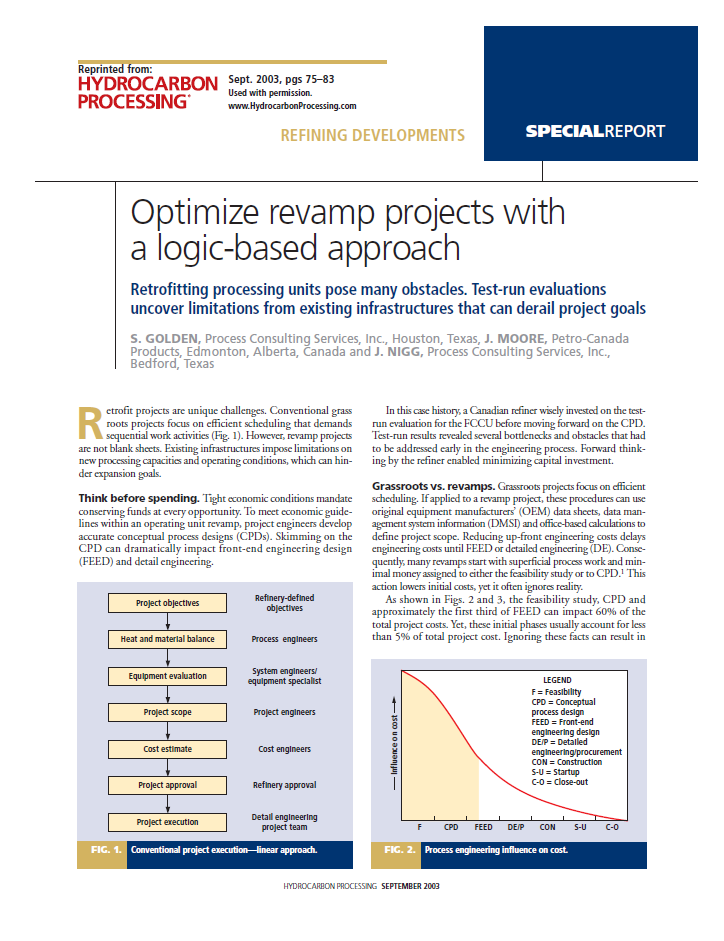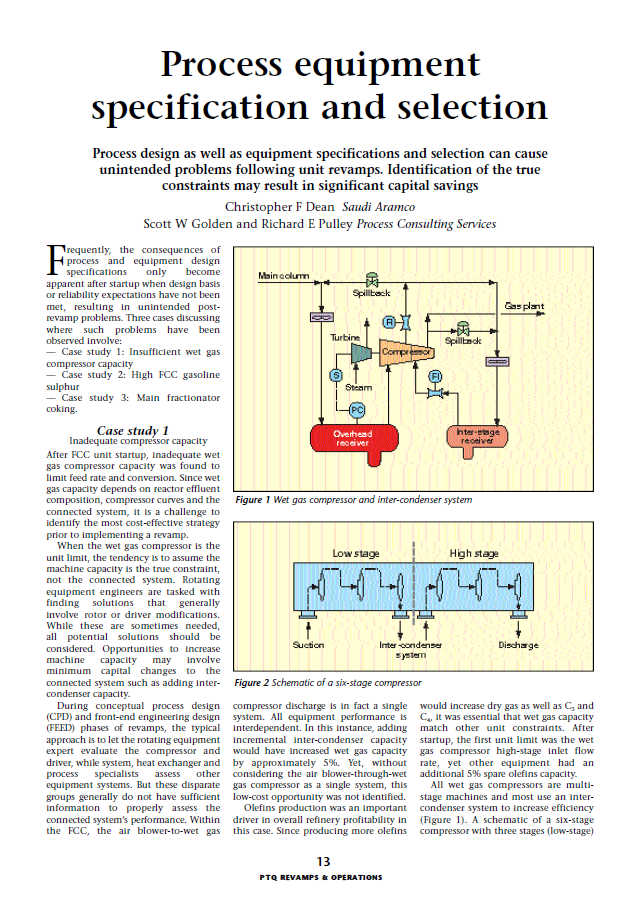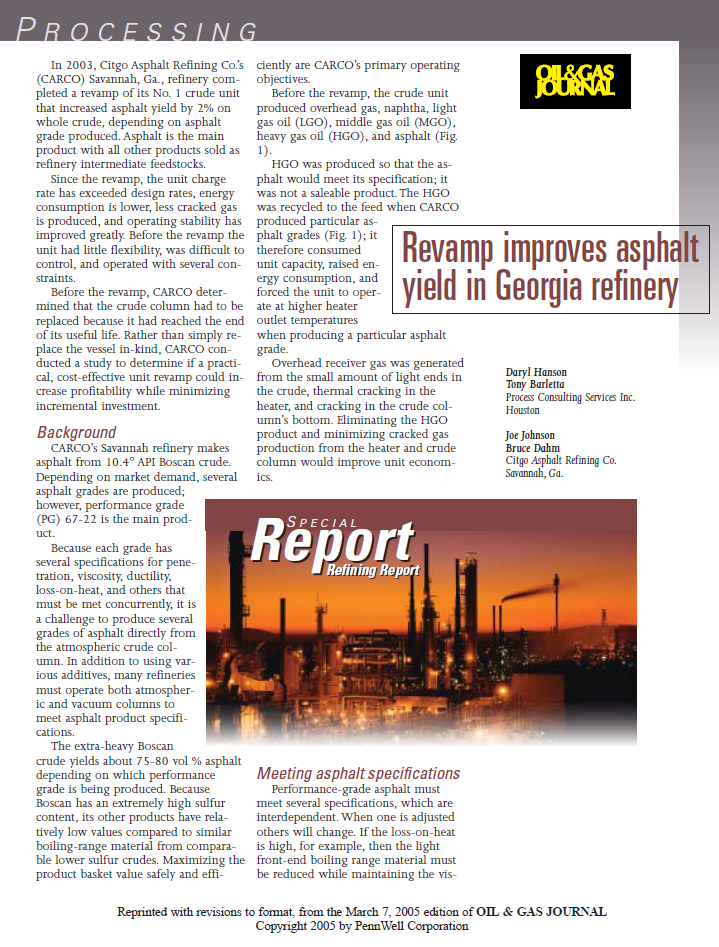World heavy crude volumes are increasing, and as a result CDU/VDU operating problems and the frequency of unscheduled outages is also increasing. Conventional CDU/VDU designs will not operate reliably or profitably on the more challenging crudes. This article addresses problem areas and identifies specific sections requiring investment to maintain profitability throughout a 4-5 year run length for refiners processing heavy crudes.
Read MoreA description of the internal workings of vacuum heaters and the causes of coke formation within them. Case studies show how to avoid localised hot spots in order to maintain yield targets and increase run lengths.
Read MoreImproved CDU, FCC and Coker main column fractionation maximizes diesel boiling range yields while eliminating hard-to-treat sulfur components from the hydrotreater feed. Hydrotreater run lengths can be materially improved by improving the segregation of easy-to-treat and hard-to-treat sulfur species in upstream distillation units.
Read MoreRefiners must fine-tune crude unit process design and energy balance to process a heavy feedslate.
Read MoreAn account of a crude vacuum unit revamp in which detailed calculation of the true performance of existing equipment, plus a realistic calculation of the benefits a revamp would bring, raised diesel production by 14.5 vol% on crude.
Read MoreExtensive troubleshooting experience shows what methods are most successful.
Read MorePreheat train design for heavy Canadian crudes can be very challenging, requiring an approach not normally required with other crudes.
Read MoreNew units for processing heavy crudes should not be designed using conventional practices or run length with be short, and product yields and quality poor.
Read MoreWhen designing vacuum units for processing heavy Canadian crudes, reliability costs can be high if the feedstock’s thermal instability is not fully appreciate. Process design considerations affection VGO yield and quality are discussed.
Read MoreFundamental design considerations influencing diesel and vacuum gas oil (VGO) recovery when revamping existing or designing grassroots crude units.
Read MoreCost-effective exchanger network solutions, designed to increase crude preheat temperature and reduce energy consumption, need to rely on more than just pinch technology if they are to be successful.
Read MoreA comparison of the standard versus practical approach to the revamping of a crude unit. In this article the focus is on optimising the use of existing equipment, changing the process flow scheme to minimise flash zone pressure and thereby maximising the yield.
Read MoreCrude unit revamps can sometimes yield large economic improvements with low-capital investment. In this case study, improving atmospheric crude column stripping section efficiency improved diesel yields and unloaded the downstream vacuum column ejectors, increasing VGO yield. The low-capital modifications made in this revamp had a simple payout of less than 2 months.
Read MoreThe basis of a lube vacuum column revamp and its results are discussed. The primary goals were to increase lube product fractionation, minimise HVGO product contaminants and improve vacuum bottoms specifications for asphalt production.
Read MoreProcess and equipment design improvements, particularly with regard to crude unit and delayed coker distillation column performance, can reduce metals content. Optimization of components, including vacuum column stripping section and coker main fractionator wash zones, should be considered.
Read MoreFundamental operating principles of vacuum ejectors are discussed, including incidents leading to sudden increases in ejector suction pressure, known as breakthrough. Proper ejector component selection and design can significantly prevent breakthrough and increase VGO yield, while reducing resid production.
Read MoreThe CDU/VDU process flow scheme is reviewed, including equipment design and operating fundamentals used to maximise straight-run diesel recovery. Factors important to increasing diesel yield are discussed in detail.
Read MoreRetrofitting processing units pose many obstacles. Test-run evaluations uncover limitations from existing infrastructures that can derail project goals.
Read MoreProcess design as well as equipment specifications and selection can cause unintended problems following unit revamps. Identification of the true constraints may result in significant capital savings.
Read MoreA refiner producing various grades of asphalt from Boscan crude revamped their CDU to maximize asphalt yield while meeting product quality. These heavy crudes are difficult to process and specifications can be challenging when producing performance grade material. The successful revamp detailed in this article increased asphalt yield by 2% on whole crude and greatly improved unit stability.
Read More


